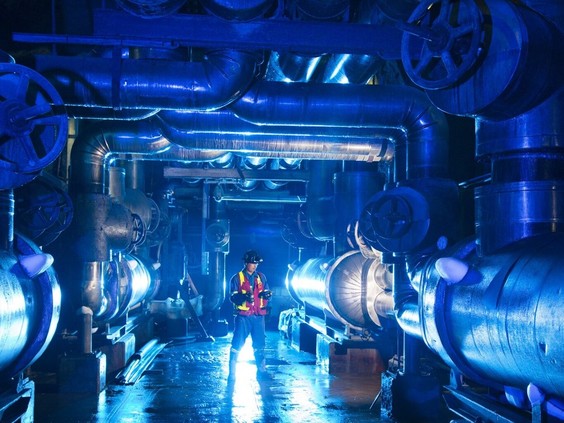
About half of the ore mined by the Canadian nuclear fuel giant is now extracted using automation and AI
Regina Leader-Post
Many countries around the world are looking to build out their capacity for nuclear power as they try to reduce their carbon emissions, which has created an increased demand for uranium.
But the market for uranium has also been undergoing some major changes due to sanctions on Russia because of its invasion of Ukraine. There have been quite a few changes on the operations front, too.
For example, Saskatoon-based uranium miner Cameco Corp. is undergoing a major evolution in the way it extracts the heavy metal. Lloyd Rowson, vice-president of technical services, said the best example of this change can be seen at the Cigar Lake mine, which began operating in 2014.
“That mine incorporates a novel, brand new mining method called the jet boring system,” he said, adding that Cigar Lake is the only mine in the world using it.
The jet boring method uses artificial intelligence alongside machines to extract uranium ore. The ore is frozen before being cut using a high-pressure water jet, then transported via pipes to other parts of the mine, where it’s treated and prepared for transportation to the milling facility.
“We are able to extract ore there from the ground, recover it and process it all without any, what I would say, manual intervention of any kind,” Rowson said.
Machine learning and artificial intelligence enter the process when providing the jet boring machine with instruction and direction. Rowson said Cameco, in collaboration with Saskatchewan Polytechnic, developed a way to program the jet boring machine to adjust its extraction methods depending on the type of rock formation, which allows the machine to mine ore more efficiently. Previously, this programming needed to be done manually.
“The machine is able to process that information and spit out usable information about how to excavate the rock,” he said.
Cameco and the uranium industry are not alone in their efforts to automate mining operations. Success in mining is increasingly dependent on turning challenges, such as declining productivity, volatile pricing, changing worker demographics and maturing assets, into opportunities, and that’s where AI and innovation come in, Deloitte LLP said.
“No technology ever has or will be a magic bullet for industry at large or in any specific operational context,” Deloitte said in a recent report. “At the same time, the mining industry is learning that AI-related technologies can help frontline workers make better decisions quicker, while reducing human error, environmental footprints and the need for human intervention in potentially dangerous situations.”
At a recent investor day, executives from Nutrien Ltd., another Saskatoon-based company, announced they are looking to use automation and artificial intelligence to better mine potash at the company’s facilities. To accomplish this, Nutrien plans to spend $15 million to $20 million per year over the next 10 years. Company chief executive Ken Seitz said the company has some specific targets.
“In potash, we are targeting 40 to 50 per cent of ore tonnes cut using automation by 2026,” he said.
Chris Reynolds, Nutrien’s executive vice-president and president of the potash business, said automation technology was historically developed with safety in mind, but has also proven helpful for increasing productivity. He said using automated mining equipment means work doesn’t have to be stopped when unstable ground is encountered.
“Now, with this automation, there’s no risk to anyone; we can mine straight through that ground,” he said.
Rowson at Cameco said improved safety and increased productivity have driven much of the company’s push toward automation. Staff looked for areas where changes could be made while its facilities were in care and maintenance due to low uranium prices, he said.
One of these changes involved investing in machinery to seal drums of radioactive material at its Key Lake facility. Rowson said this move was primarily driven by the urge to improve worker safety.
“It’d be better if a worker was further away from it and not spending all day beside it bolting up lids on drums,” he said.
Along with improved safety, Rowson said changes such as these have helped improve efficiencies and allow the company to employ fewer workers.
He said roughly half of the uranium ore mined by Cameco is obtained using some form of automated technology.
While Cigar Lake is nearly fully automated, Cameco’s other facilities are still mining much of their ore with more conventional methods, such as drilling and blasting to extract the ore.
Cameco’s Rabbit Lake mine, which is currently in care and maintenance, normally has workers extracting uranium ore in a much more conventional way.
“Workers are operating drills — drilling with blast — and loading the broken rock out with the loaders,” Rowson said. mhansen@postmedia.com

